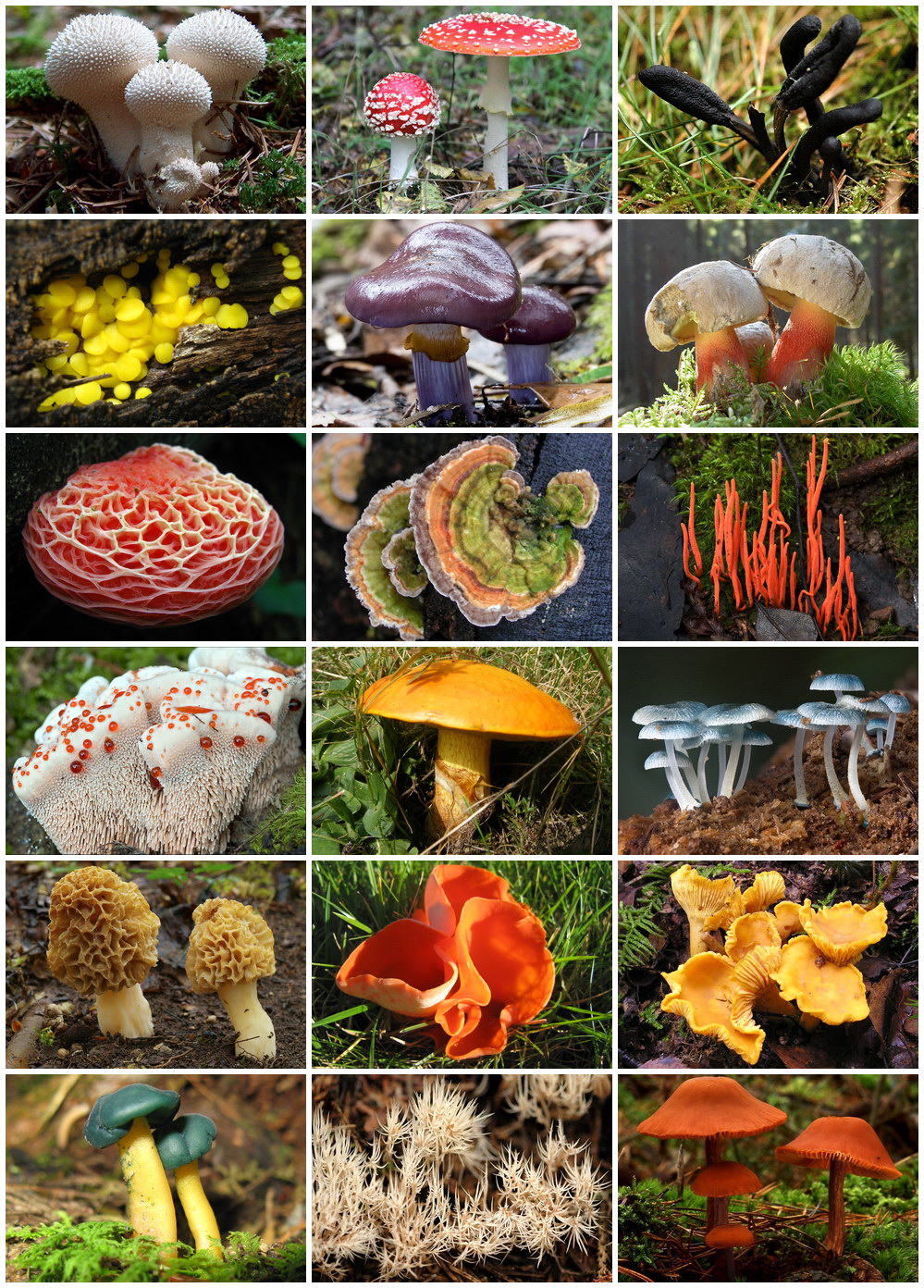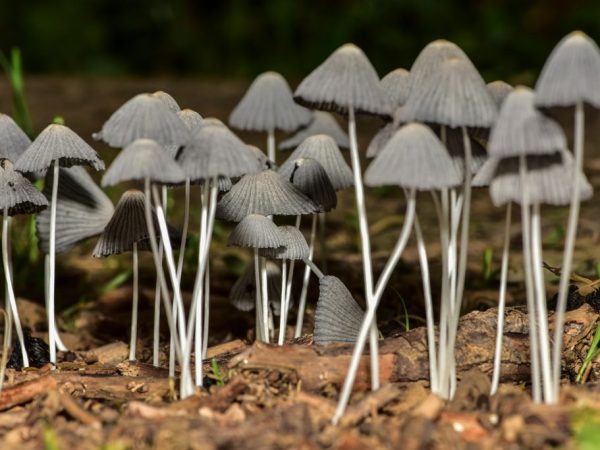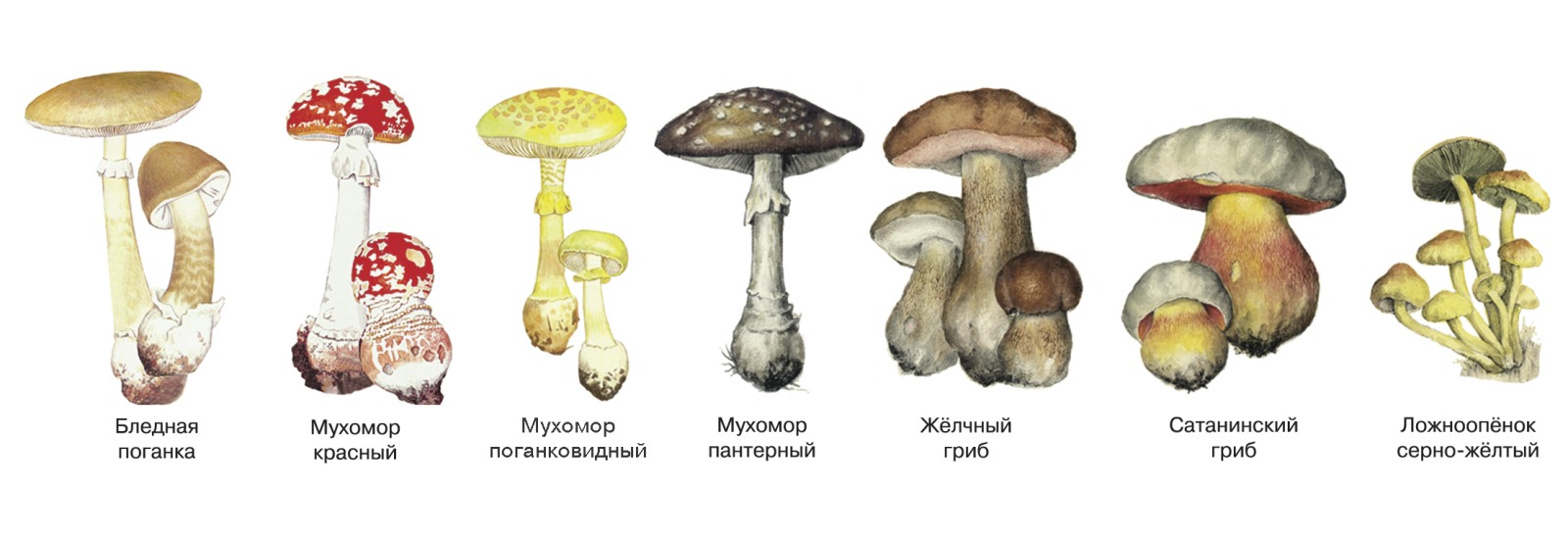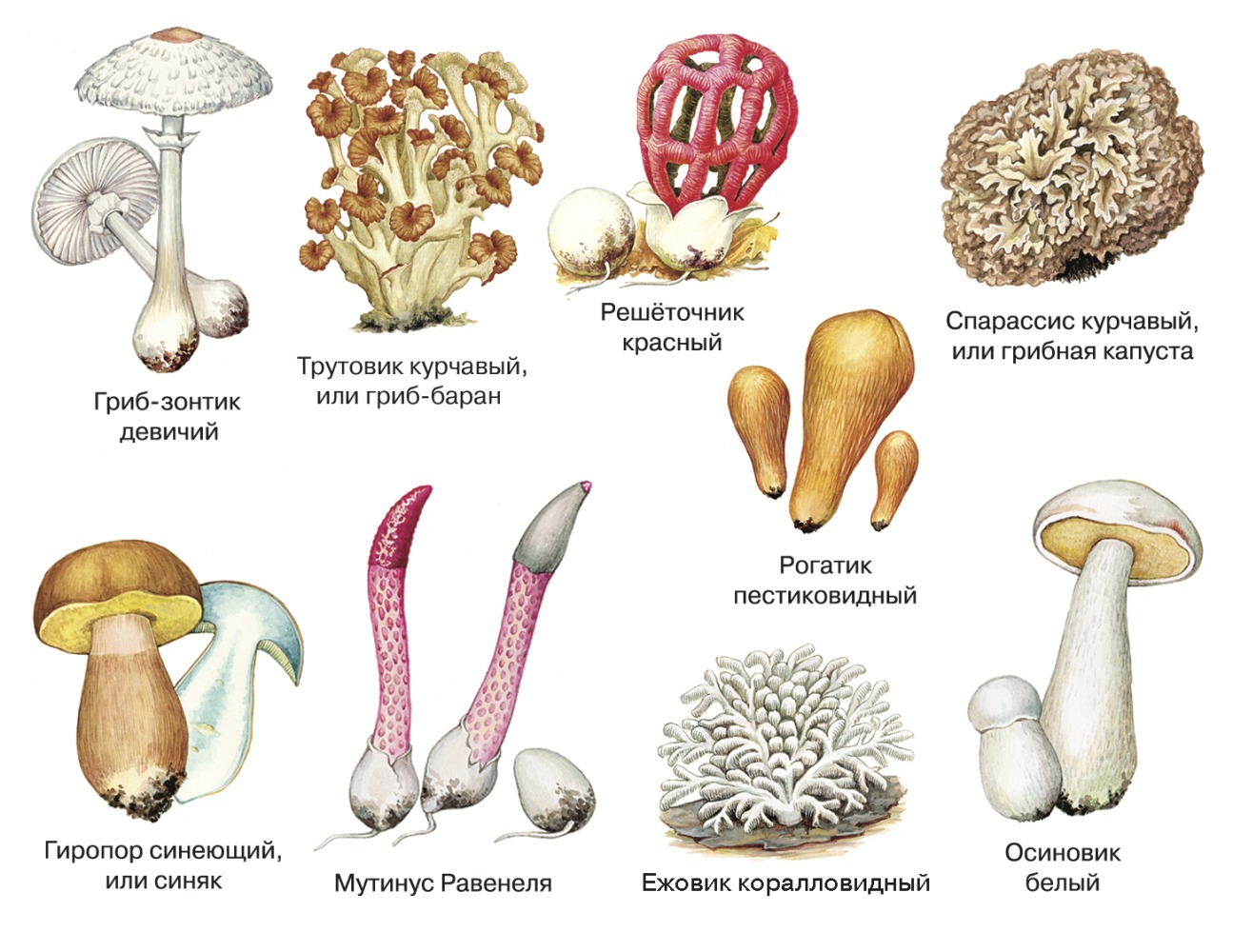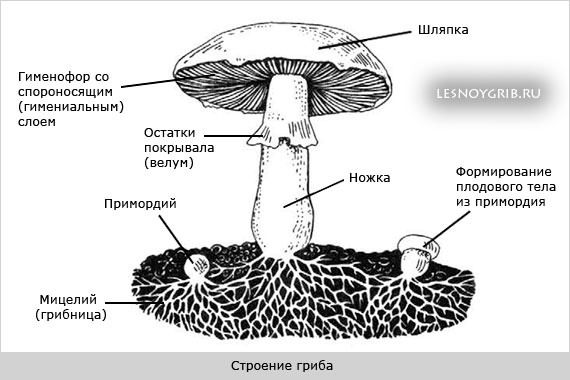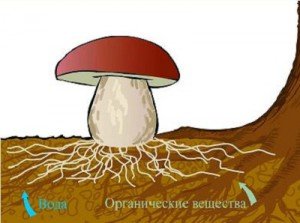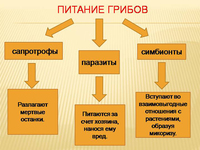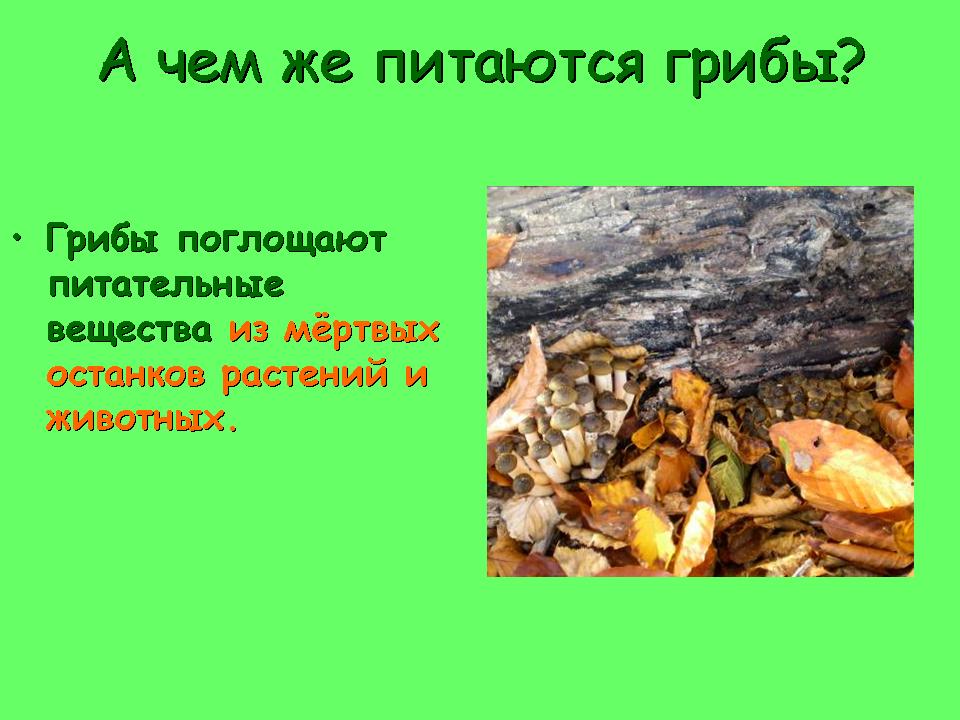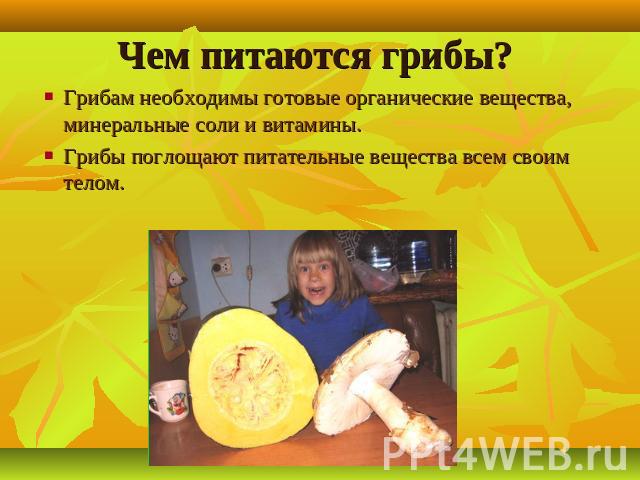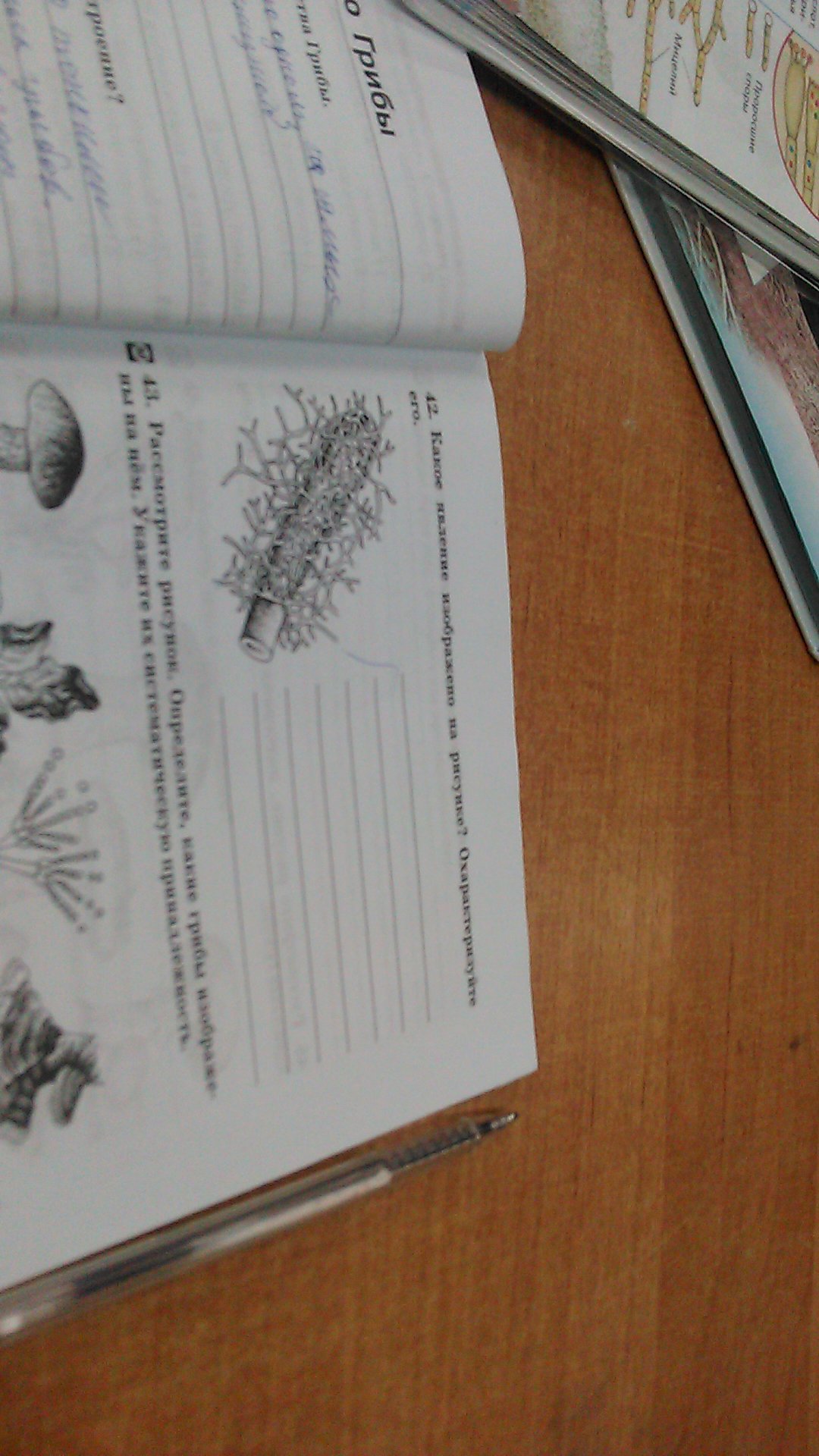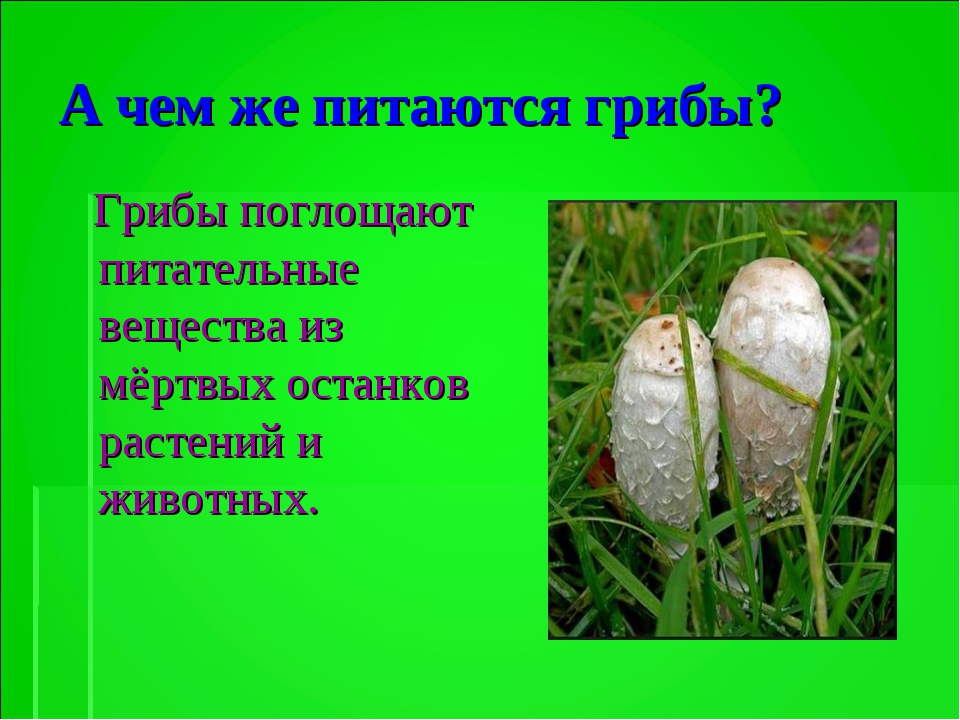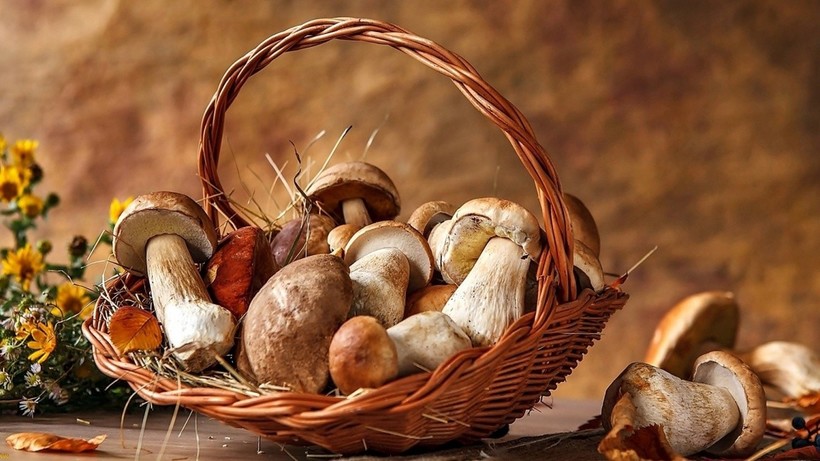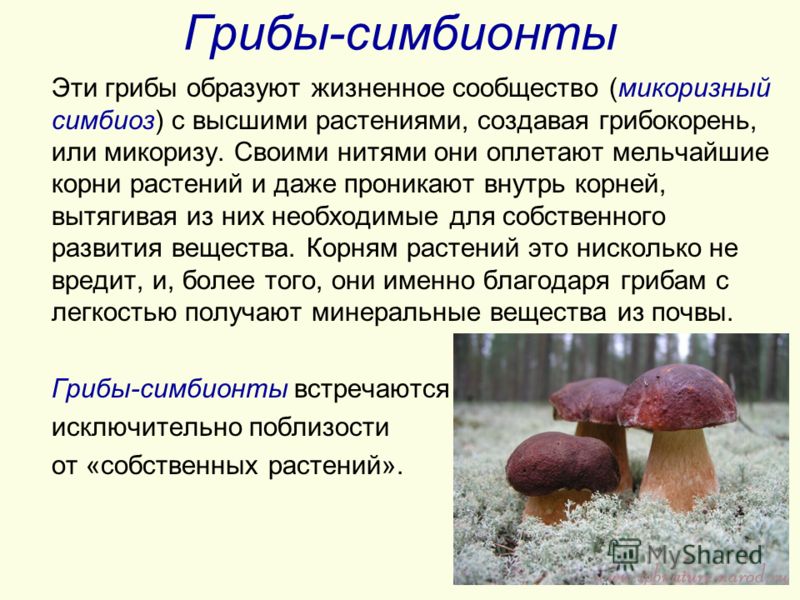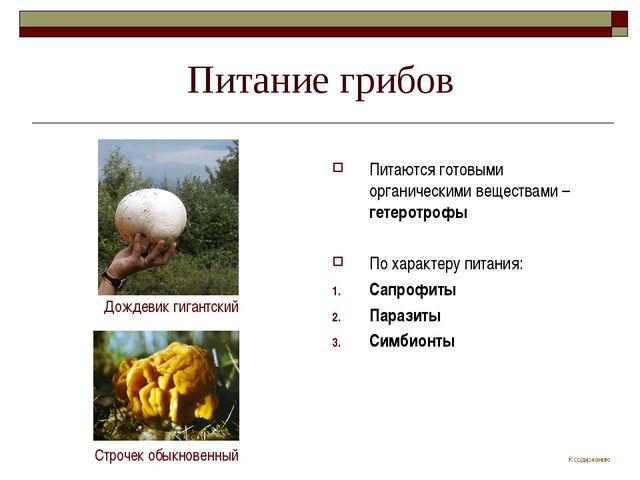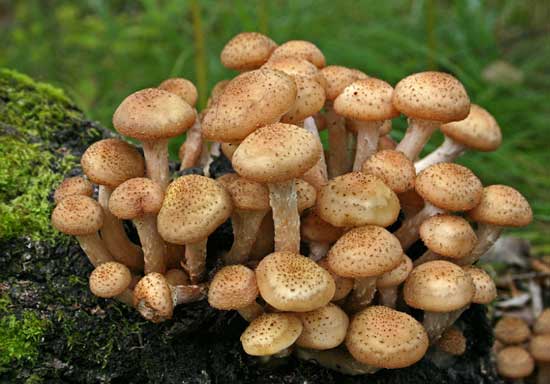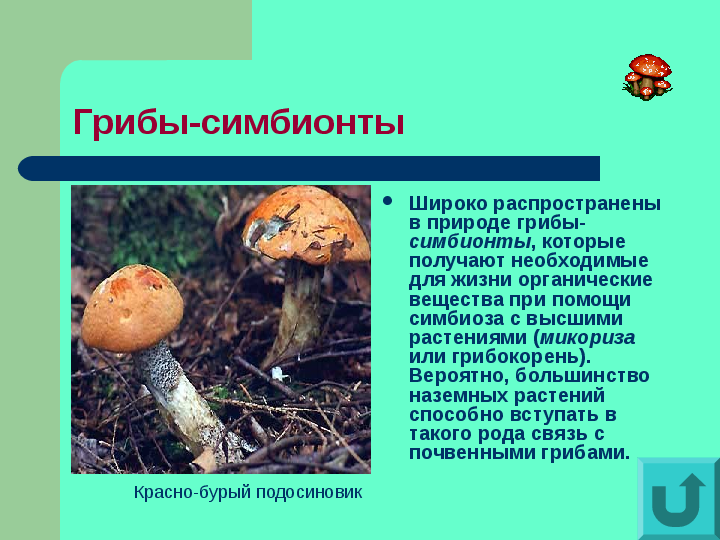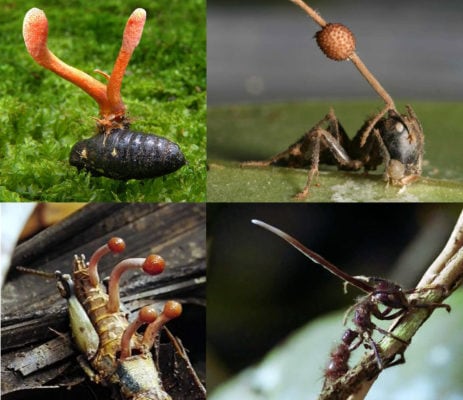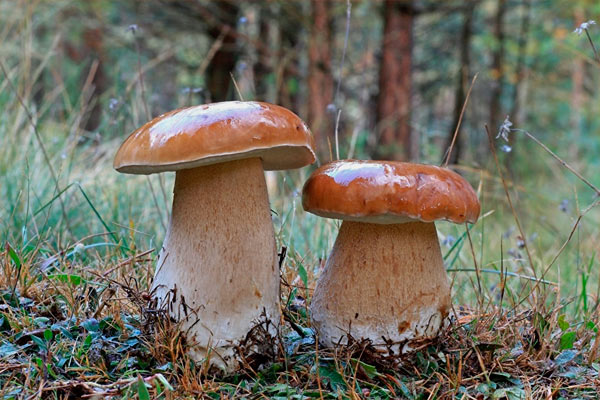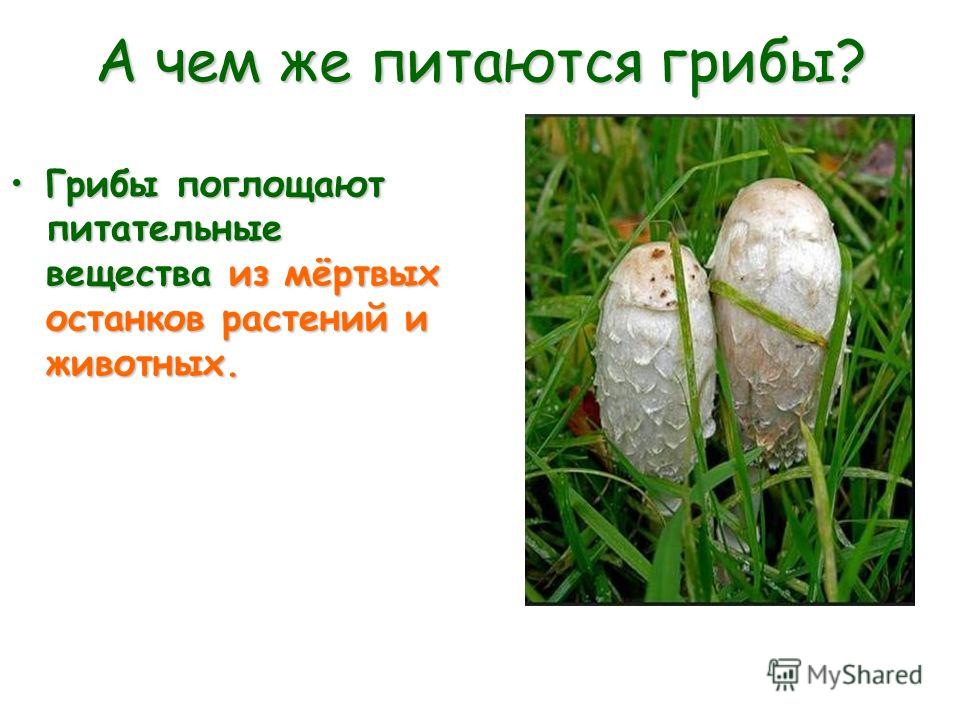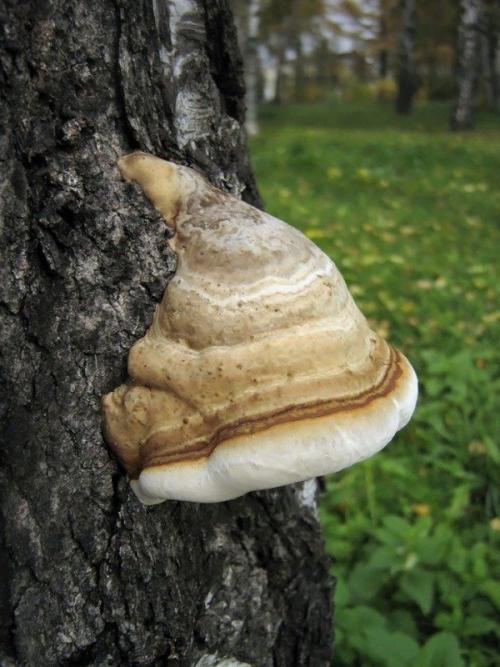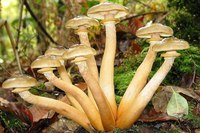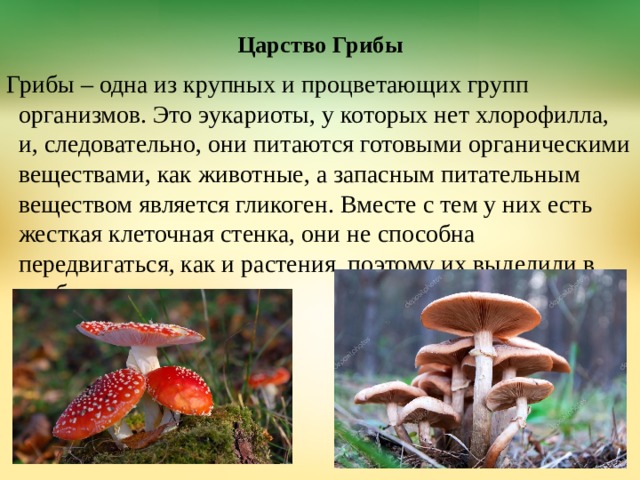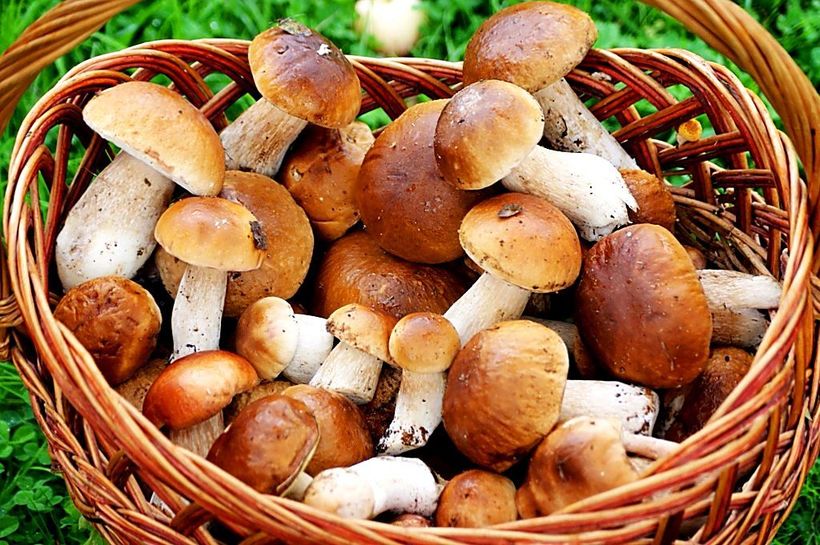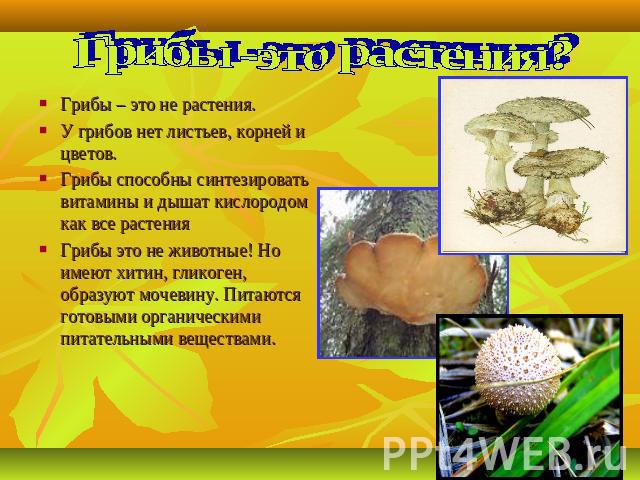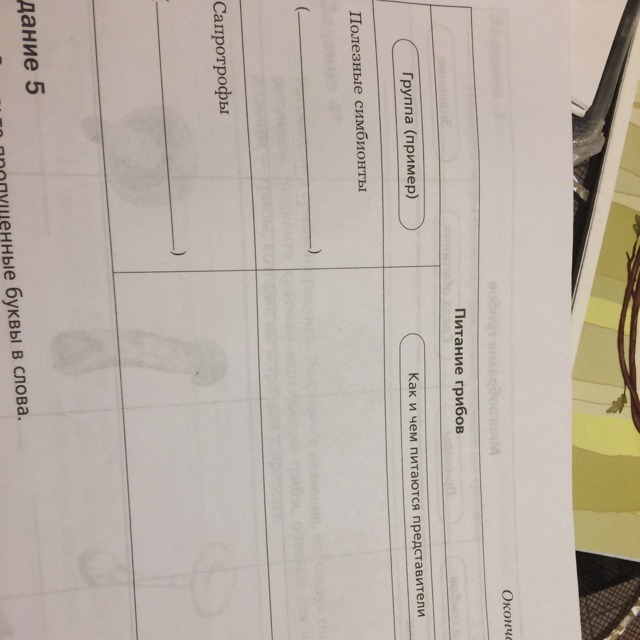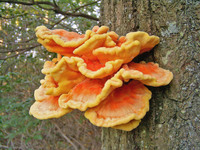Amanita - poison or benefit?
Who else eats mushrooms in the forest? If we talk about large forest dwellers, then first of all it is worth mentioning the elk. These animals are really very fond of mushrooms, and of different species. In relation to moose, it is very interesting that they willingly eat fly agarics, which are poisonous for many representatives of the fauna. Scientists are very interested in studying this issue, but today they cannot exactly explain the nature of the phenomenon. Many of them are inclined to think that this is how moose somehow "disinfect" their body. There is also an opinion that some trace elements of the fly agaric contribute to the digestion of elk.
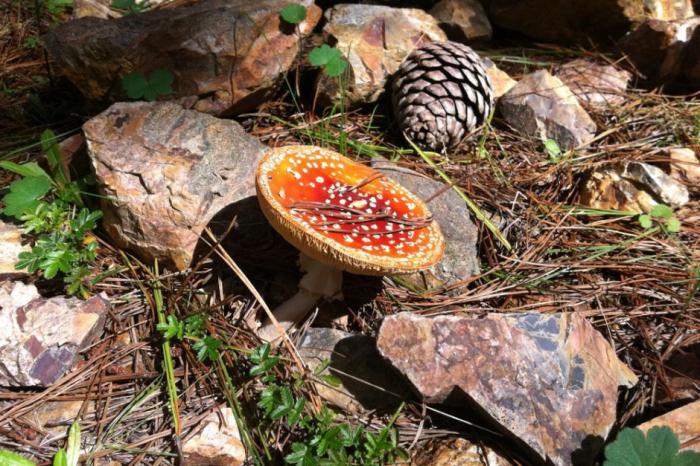
In this regard, I would like to note that not only animals, but also people sometimes use fly agarics. But, unlike animals, people eat fly agarics exclusively for medical purposes. In rural areas, various alcoholic tinctures are still made based on this particular mushroom. Their use is said to contribute to the treatment of rheumatism.
In fact, mushrooms contain many useful, both for humans and animals, trace elements. And it is for the purpose of medical prevention, and not just from hunger, that many animals eat them.
Mushroom hazards
However, mushrooms can be harmful. We must not forget that phytopathogenic fungi that grow in an undisturbed ecological system can become a very serious safety problem. Usually not posing a threat, in artificially created conditions or in places of human activity, they can cause skin diseases - dermatomycosis, and sometimes serious damage to internal organs - deep mycoses. And this applies not only to people, but also to animals.
Poisoning with "traditional" poisonous mushrooms can be very dangerous for humans. In some cases, even death is possible. Such poisoning is usually caused by eating highly toxic or hallucinogenic mushrooms.
Mushroom nutrition
To feed the mushrooms, the intake of ready-made organic substances from the external environment is necessary. And in this they are similar to animals. This food is called heterotrophic. Unlike animals and fungi, plants feed autotrophically, that is, they themselves can synthesize organic matter from inorganic substances for their nutrition.
However, fungi are similar to plants in the way they absorb substances from the external environment. They do this by being absorbed into the cells directly from the external environment. In animals, food comes mainly by ingestion, followed by internal digestion. In the case of plants, only inorganic substances and water are absorbed from the external environment. In the case of mushrooms, they are also organic.
The body of the fungus consists of hyphae, which are in the form of filaments. Together, the hyphae form the mycelium. Growing strongly, the hyphae provide a large suction surface for the fungus.
The mycelium cannot absorb solid food particles. Therefore, substances are released from it into the external environment that break down proteins, fats and carbohydrates to simpler ones. Then solutions of these substances are absorbed by the fungal hyphae. In other words, external digestion is observed in fungi.
Some types of mushrooms are capable of breaking down many organic substances, others - only a few. This determines the habitat of the fungus (the substrate on which it can grow). Many mushrooms can only grow on a specific substrate, since only this substrate contains those substances that the fungus can assimilate.
Depending on the substrate on which the fungus can grow, fungi are divided into saprophytes and parasites. Saprophytes grow in places where there is a lot of dead organic matter. For example, in the soil. Parasites grow on living organisms.
Saprophytic fungi include many cap and mold fungi, yeast. Saprophytic fungi perform a useful function in nature, as they decompose organic residues of other organisms into inorganic substances. Thus, they support the circulation of chemical elements in nature.
Parasitic fungi lead to plant and animal diseases. They can cause serious damage to agricultural plants, which greatly reduces yields.
Also, mushrooms often enter into symbiosis (mutually beneficial cohabitation) with other organisms. Everyone knows the symbiosis of a number of cap mushrooms and trees. The hyphae of the fungus penetrate into the roots of the plant and receive from it a number of organic substances they need. The plant, due to the mycelium of the fungus, increases its absorbing surface, since the fungus absorbs water and minerals from the soil for it.
How to salt and pickle mushrooms?
Dmitry Bystrov:
“Salting and pickling are the classic, most attractive and at the same time the most risky ways to preserve mushrooms. Here you need to be a self-confident person and understand all the technology of pickling and pickling, know all its subtleties and not doubt that you will really make a good product that will not deteriorate during storage. It is easy to make a mistake both when cooking and when storing ready-made mushrooms.
There are different ways of pickling and pickling mushrooms, I will tell you about the simplest ones.
When salting, you need to take into account several points: it is better not to add onions, but you need to put more currant leaves, cherry leaves, oak leaves and dill branches - to give strength to the taste. There is a cold method of salting, when the mushrooms are peeled, soaked for a long time, poured with brine, and they are salted in it for a long time. An attractive but rather unsafe way.
Therefore, I recommend the hot method of pickling.
First, the mushrooms must be boiled in a highly salty solution - one kilogram of mushrooms will need half a glass of water and three tablespoons of salt.
When the water boils, it is necessary to remove the foam from it, and add spices to the brine: allspice, cloves, dill, currant leaves. Next comes the cooking process. Porcini mushrooms, boletus mushrooms, aspen mushrooms are cooked the longest - this is about 25-30 minutes. 20 minutes is enough for value people, and 15 minutes will be enough for volushkas and russula. After that, the mushrooms need to cool down, and then they are laid in jars, adding bay leaves and dill. The space that remains between the brine and the lid must be filled with a small amount of oil, which will close our product with a natural cork: the oil will prevent mold from forming by blocking the access of oxygen.
For pickling, the mushrooms must be rinsed, boiled, then cooled and folded into jars that you thoroughly sterilized beforehand. Layers of mushrooms should be alternated with layers of greenery and garlic. At the same time, the marinade is prepared separately: for half a liter of water, half a liter of 6% vinegar, 30 grams of salt, bay leaves, black and allspice are needed. All this needs to be boiled, cooled to 45 degrees, poured into jars with mushrooms, and the closed jars should be sent to a water bath for 30 minutes. This is the easiest recipe.
You also need to remember: for the preservation of mushrooms, it is not recommended to take metal lids, which are closed with a seaming machine. For mushrooms, it is better to take screw caps, the bottom of which is covered with a thin layer of rubber, or glass. From the interaction of the metal with the brine, the metal will oxidize, and the product will deteriorate. The metal lid keeps canned food for about a year, and the glass lid for about two years (under the right storage conditions).
Some are salted in tubs, putting mushrooms under pressure, and covering them with brine. Mold can easily develop with this method. Mold is a taboo for food technologists. Mold has appeared - the product must be disposed of. If we see mold on the surface, then be sure that its spores are already inside. "
Structure
The body of the overwhelming majority of fungi is built of thin filamentous formations - hyphae. Their combination forms the mycelium (or mycelium).
Branching out, the mycelium forms a large surface, which ensures the absorption of water and nutrients. Mushrooms are conventionally divided into lower and higher. In lower fungi, hyphae do not have transverse septa and the mycelium is one highly branched cell. In higher fungi, hyphae are divided into cells.
Yeast and fungi are intracellular parasites, they do not have mycelium.
The cells of most fungi are covered with a hard shell, which is absent in zoospores and the vegetative body of some of the simplest fungi. The cytoplasm of the fungus contains structural proteins and enzymes, amino acids, carbohydrates, and lipids that are not associated with cell organoids. Organoids: mitochondria, lysosomes, vacuoles containing storage substances - volutin, lipids, glycogen, fats. There is no starch. A mushroom cell has one or more nuclei.
Animals and mushrooms
Based on the above facts, it becomes clear that mushrooms are quite important for humans from the point of view of food raw materials. But what about the fauna? What value is the world of mushrooms for them? What animals eat mushrooms? These questions can be answered by studying in detail the habits of the most common forest dwellers. It should be noted right away that many forest animals, for example, moose, squirrels, bears, and deer, eat them quite willingly.
Forest mice are recognized as great hunters to feast on mushrooms. True, they rarely make supplies, preferring to eat out all the most delicious directly on earth. It is curious that forest vole mice for some reason eat the leg of the mushroom, leaving the cap intact. And if we see a large number of boletus or boletus caps lying on the ground, this is a sure sign that a mouse feast has recently taken place in this place.
Some birds also love mushrooms. They eat them exclusively in the summer-autumn period, pecking the delicacy right on the ground. In addiction to mushrooms, scientists have noticed jays, black grouse and some species of wood grouse. And it is the birds that contribute to the rapid spread of forest gifts, transferring mushroom spores (excreting them along with feces) to regions that are quite remote from the current habitat. This is also possible because the spores, having passed through the digestive system of birds, are stimulated to germinate.
The role of mushrooms in nature
Many fungi grow together with the roots of trees and grasses. Their cooperation is mutually beneficial. Plants provide the mushrooms with sugar and proteins, and the fungi destroy the dead plant residues in the soil and suck in the water with the minerals dissolved in it through the entire surface of the hyphae. The roots that have grown together with fungi are called mycorrhiza. Most trees and grasses form mycorrhiza.
Fungi play the role of destroyers in ecosystems. They destroy dead wood and leaves, plant roots and animal corpses. They convert all dead residues into carbon dioxide, water and mineral salts - into what plants can assimilate. While feeding, mushrooms gain weight and become food for animals and other mushrooms.
* * *
Reproduction of oak
If you want to have a magnificent specimen of a deciduous tree on your site, then you can grow it from an acorn. Collect them in the fall and keep in a cool place. You can plant them in pots with nutritious soil, and by the spring there will already be tender sprouts that can be transplanted. to a permanent place.
A young oak tree dug in the forest will easily take root in the garden if you add land taken in the place of its growth to the planting hole. The pit is prepared in advance by filling with loose soil, neutral in acidity
Attention to the seedling will reduce the time it takes to adapt the sprout to new conditions, and gain a foothold in a new place.
In the second case, the process will be delayed for several years. However, the chances of achieving a positive result are much greater.
Features of the vital activity of mushrooms.Nutritional features of mushrooms.
All fungi are heterotrophs, that is, they need ready-made organic substances. Mushrooms absorb exclusively liquid substances through the entire surface of the body, while the huge surface area of the mycelium is very beneficial. External digestion is characteristic of fungi, that is, first, enzymes are released into the environment containing nutrients, which, outside the body, break down polymers into monomers, which are absorbed into the cytoplasm.
Mushrooms - predators prey on the smallest soil worms - nematodes. Scientist Charles Daddington described mushroom hunting in the following way: "The fungus hyphae are equipped with many small loops that connect and form a net ... The loops of the net are very sticky ... If a nematode touches one of the loops, it will immediately be caught like a fly on sticky paper." Thin processes of the mycelium pierce the integument of the worm, penetrate into its body and suck out the contents.
Mushrooms are involved in the creation of two important symbiosis - lichens and mycorrhiza. Lichen is a symbiosis of fungus and algae. Mycorrhiza (from the Greek "mycos" - mushroom and "riza" - root) is a mutually beneficial cohabitation of the fungus with the roots of higher plants. The fungus receives ready-made organic substances from the plant, and in return increases the root surface many times, helping to absorb water and minerals. Plants develop worse without mushrooms. For some plants, mycorrhiza is necessary. Orchids cannot germinate seeds. The fungi involved in mycorrhiza protect plants from pathogenic organisms, in particular from attack by other harmful fungi. Therefore, mycorrhizal species of fungi cannot be grown artificially.
| Ectomycorrhiza | Endomycorrhiza | Ectoendomycorrhiza |
| the fungal hyphae entwine the root with a dense network, penetrate through the rhizoderm of the root and spread through the intercellular spaces, without penetrating into the cells. | the fungal hyphae penetrate into the cells of the root cortex, the main part of the fungus is located inside the root. | Combines the signs of both endo- and ectomycorrhiza. |
Reproduction of mushrooms.
| Asexual | Sexual |
| Parts of mycelium Budding Spores | The fusion of male and female germ cells (gametes) and the formation of a zygote. |
Asexual reproduction.
Actually asexual reproduction takes place through spores. Endogenous spores form inside special sporulation organs called sporangia. Typical for lower fungi. Exogenous spores (conidia) are formed on the tops or on the side of special hyphae - conidiophores. They are characteristic of higher and some lower fungi. Vegetative propagation occurs by parts of the mycelium, in yeast fungi - by budding.
| Endogenous spores of sporangiospores | Exogenous spores of conidia |
In tubular and lamellar fungi, spores form on the walls of the laminae and tubules.
In chytridiomycetes, asexual reproduction proceeds by means of zoospores, which are mobile due to flagella. They develop in zoosporangia.
Date added: 2016-11-20; views: 677 | Copyright infringement
Can you eat raw mushrooms?
Maxim Dyakov:
“Mushrooms contain a huge amount of organic compounds, and some of them are poisonous to us. Most of the mushrooms that we consider edible are inedible raw. Unas had a case: a student of the biology department got poisoned with raw boletus mushrooms, and was seriously poisoned, we even called an ambulance for her. We tell her: honey, why did you do this? And she says: well, of course, the squirrel eats. So - we are not squirrels!
But most of the cultivated mushrooms can be eaten raw - oyster mushrooms, champignons, shiitake. In Japan there is a proverb that says: a man who eats a raw shiitake mushroom every day lives to a ripe old age in a sober mind and masculine strength. Now enoki mushrooms have appeared in stores - in fact, this is our, Russian winter mushroom, only varietal. These same enoki are beautiful raw - but do not forget that they have been brought to us for a long time and what is sold in the store is no longer worth eating raw.
The russula of the middle lane are non-toxic, and in principle, you can eat them raw, but for my taste they are simply tasteless. But among those mushrooms that are called russula, there are a number of species that are very bitter, usually russula with a red cap. "
Watering a tree in dry weather
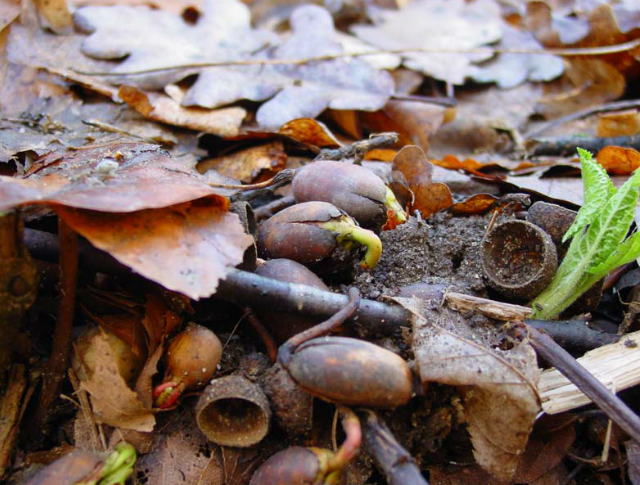
Trees have large and strong roots, with the help of which they can easily extract water from the soil, even if it is completely dry on the surface. In winter and during the rainy season, young growth should not be watered. But in dry weather, it is wise to install an irrigation system. On hot days, the tree needs 30 liters of water for 14 days. During a drought, watering will be relevant for 2 years.
Important! Water should not be allowed to collect around or fall on the barrel. It may start to rot
In addition to the fact that oak adorns summer cottages, it also brings many benefits. Oak bark is used to make medicines. It relieves inflammation in the mouth and helps to cope with diarrhea. You can even plant truffles under this tree. Stone oak bears edible fruits, from which not only different dishes are prepared, but also aromatic coffee is brewed.
Growing oak tree care

In the early days of a seedling in the fresh air, it may seem that it is unrealistic to grow an oak from an acorn at home. The plant will feel uncomfortable, because it will have to get used to new lighting, soil and space.
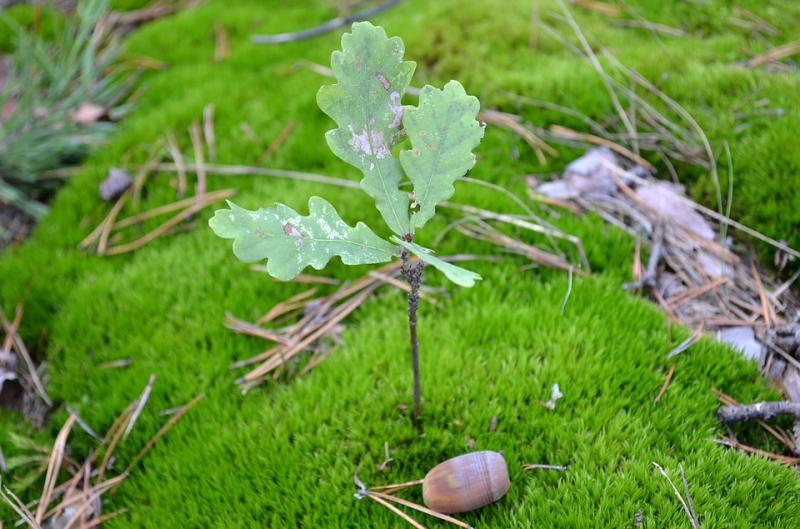
Young oak
However, if everything is done correctly, it will get stronger and begin to fully develop. The tree needs special care for the first three years. Then it will get stronger and be able to develop independently. For full and rapid growth, you must adhere to the following recommendations:
- it is necessary to provide the young seedling with protection from rodents, for which it is a real delicacy. It is worth building a small fence that will protect the tree from all sides;
- in addition to rodents, acorn sprouts can also be attacked by various insects. The most common oak leaflet, cap moth and large oak barbel. It is necessary to use pesticides that will protect the seedlings from these beetles;
- the first two weeks after planting, the seedling needs to be watered every day. Pour out a bucket of water at a time.
Nutrition
Most mushrooms look like long filaments that suck up nutrients from the entire surface. Mushrooms absorb the necessary substances from living and dead organisms, from soil moisture and water of natural reservoirs.
Mushrooms release substances that break the molecules of organic substances into pieces that the fungus can absorb.
Three main groups of fungi are distinguished by the way of feeding: parasites, saprophytes and symbionts. These three groups cannot be sharply differentiated, because saprophytes, for example, often acquire the ability to feed on a living substrate.
But under certain conditions, it is more useful for the body to be a thread (like a mushroom), and not a lump (cyst) like a bacterium. Let's check if this is so.
Let's trace the bacteria and the growing filament of the fungus. A strong sugar solution is shown in brown, a weak solution is light brown, and sugar-free water is white.
Ecological groups of mushrooms
Soil mushrooms
Soil fungi are involved in the mineralization of organic matter, the formation of humus, etc. In this group, fungi are isolated that enter the soil only at certain periods of life, and fungi of the rhizosphere of plants living in the zone of their root system.
Specialized soil mushrooms:
- coprophylls - fungi that live on soils rich in humus (manure heaps, places of accumulation of animal droppings);
- keratinophylls - fungi that live on hair, horns, hooves;
- xylophytes are fungi that decompose wood, among them there are destroyers of living and dead wood.
Aquatic mushrooms
Among them, one can distinguish saprophytes living on plant debris, parasites of aquatic animals and plants, as well as fungi that cause fouling of wooden parts of ships, piers, etc.
Hat mushrooms
Hat mushrooms settle on humus-rich forest soil and obtain water, mineral salts and some organic matter from it. They get some of the organic matter (carbohydrates) from trees.
The mycelium is the main part of every mushroom. Fruit bodies develop on it. The cap and the leg are made of tightly fitting mycelium threads. In the leg, all the threads are the same, and in the cap they form two layers - the upper one, covered with a skin colored with different pigments, and the lower one.
In some mushrooms, the bottom layer consists of numerous tubes. Such mushrooms are called tubular. In others, the bottom layer of the cap consists of radially arranged plates. Such mushrooms are called lamellar. Spores form on the plates and on the walls of the tubes, with the help of which the fungi multiply.
Mycelium hyphae entwine the roots of trees, penetrate them and spread between cells. Between the mycelium and the roots of the plants, a cohabitation that is beneficial for both plants is established. The fungus supplies plants with water and mineral salts; replacing root hairs on the roots, the tree gives up some of its carbohydrates to it. Only with such a close connection of the mycelium with certain tree species is the formation of fruiting bodies in cap mushrooms possible.
Lichens: their diversity, structural features and vital activity
Mushrooms are classified according to their structural characteristics, spore formation, or sexual reproduction into the following divisions.

Lichen structure
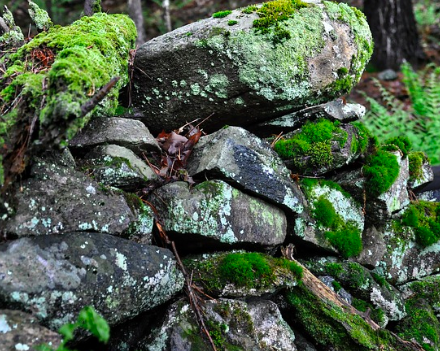 Rice. 5. Pioneers-lichens on rocks
Rice. 5. Pioneers-lichens on rocks
Lichens are of particular interest from this group of organisms (Fig. 5). It is a symbiotic group of organisms that includes fungi (microbionts) and microscopic green algae or cyanobacteria (photobiont). Sometimes a triple tandem is formed: fungus, bacteria (cyanobacteria) and algae. The microbiont builds a thallus or thallus, inside which the cells of the photobiont "hide". In the relationship, contact is established: the fungus grows in parallel with the cells of the alga.
Between the alga and the fungus there is a layer formed by the intercellular substance, which serves as a "bridge" for metabolic processes. Most often, algal cells are evenly distributed throughout the thallus, sometimes they "hide" in separate crusts of the mycelium. With the help of hyphae, fungi penetrate the cells of algae if they lack organic matter.
For your information: Lichens are unpretentious living organisms that can withstand different climatic conditions. They are able to dry out, and under favorable conditions, fill tissues with water and resume vital processes.
Lichens form a huge community of 26,000 species and inhabit all geographic zones and areas, including those that are not suitable for habitation. Withstand temperature conditions ranging from -50 to + 87C. They grow on the roots and trunks of trees, on stones, on the surface of the soil, in the water column.
They reproduce vegetatively when dividing the thallus. Due to the small pieces of thallus, poorly attached to the main “body,” these are algal cells entwined with fungal hyphae. They are easily torn off and carried by the wind to a new place. Lichens are also characterized by asexual and sexual reproduction.
Features of the relationship
The fungus feeds on the heterotrophic type, while the algae is an autotrophic organism. This allows for mutually beneficial cooperation between two groups of organisms: the fungus supplies the algae with water and nutrients, and the alga synthesizes organic substances for the fungus.
Lichens grow slowly, gradually gaining mass, life expectancy is hundreds and thousands of years. These are some of the longest-livers on planet Earth.
Variety of shapes
Slan (thallus, thallus), unlike plants, does not have a root, stem, leaves, it is solid in structure. Lichens are distinguished by an enviable variety, which is reflected in the table.
|
Type of |
Slate structure |
Examples of |
|
Scale: live on the most unfavorable surfaces for life |
Slate 1-5 mm thick looks like a crust, which is thoroughly fused with the substrate |
Lecidea, xanthoria, aspicilia, lecanor, biator |
|
Leafy: grow on tree bark, stumps, rocky ledges |
A rounded slate with dissected, uneven edges 10-20 cm in diameter. Form a lower flat layer and leaf-like outgrowths. |
Parmelia, lobaria, peltiger, nephroma, gyrophora |
|
Bushy: spread over the ground or hang from tree branches (Fig. 6) |
The slan resembles a stem-like shape and is attached with its lower part to the substrate. The branched upper part is raised up or hanging down. They look like hollow, rounded tubes. |
Yagel, sleeping, citraria, evernia, ramalin |
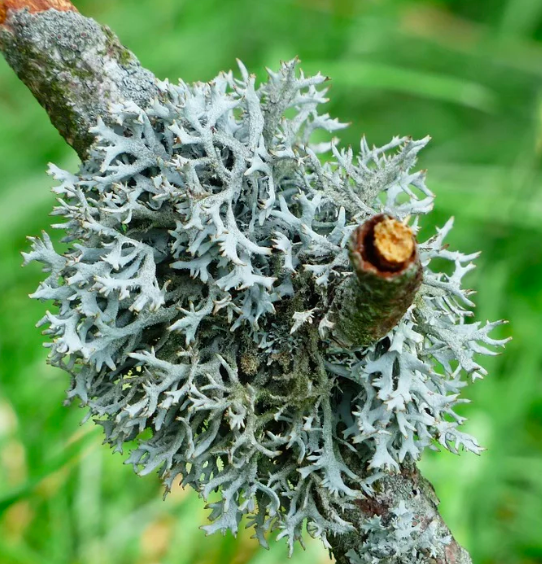 Rice. 6. One of the varieties of bushy lichen
Rice. 6. One of the varieties of bushy lichen
It is interesting: Lichens contain 20% of the mushrooms from the entire mushroom kingdom. The species diversity of algae participating in symbiosis is rather small. Half of the lichens contain only one alga - trebuxia. Cohabitation occurs as a result of a chance meeting of species, therefore, some forms of lichens are created in the laboratory.
How to cook mushrooms?
Dmitry Bystrov, Associate Professor, Department of Public Catering, MGUPP:
“When cooking mushrooms, there are a few hard-and-fast rules that cannot be ignored.
Any mushrooms are best soaked. First, they must be washed, cleaned of dirt, cut into equal pieces and soaked in salt water for a period of half an hour to an hour. This will help remove the remnants of the earth and all the living creatures that live in them from the mushrooms. In this case, you can not spare salt and add a couple of tablespoons per liter of water: you will not be able to oversalt the mushrooms during soaking, all the salt will come out of the mushroom during cooking.
Worms are not dangerous. They are simply unpleasant, and if we do not get rid of them, then there is a great chance that they will float on the surface of the soup. Many people say - it's okay, it's a protein, but in my opinion, it's better not to allow worms in food. And we must also remember that mushrooms contain the products of their vital activity, after all, a mushroom is a living organism. And when soaked, these toxins will also begin to come out, but not all - most of them are eliminated during cooking.
I recommend boiling all forest mushrooms. There is a supporter of instant frying - supposedly this way the taste will be preserved as much as possible in the mushrooms. It is not right. When cooking, toxins are released, and when frying, they turn into juice and remain in the pan. In fact, if you boil them first and then fry them well, the mushroom flavor will come through to the full. In addition, when frying, some mushrooms secrete mucus, which may contain bitterness, and during the initial cooking, it will irrevocably go away.
The first broth after five minutes of boiling must be drained, toxins will remain in it. Boil in two broths, especially if we want to use broth for soup or sauces
And it doesn't matter what kind of mushrooms we are talking about - boletus, mushrooms, white or chanterelles. The minimum time for boiling mushrooms is thirty minutes "
Simple classification
Talking about these amazing organisms, I want to answer such an important and interesting question: "How do mushrooms eat?" The answers are very diverse, and this is despite the fact that most of them belong to the same group - the basidial class. Its representatives have quite serious differences in terms of natural food consumption.
If we classify the edible gifts of the forest by how mushrooms grow and how they eat, then they can be divided into three main groups:
- humus saprotrophs;
- wood-destroying mushrooms;
- mycorrhiza formers.

The humus saprotrophs include those fungi whose mycelium is distributed in the humus layer of the soil. Fungi feed on organic matter accumulated in extinct wood, grass, etc. It is interesting that many of them grow in open spaces - fields, meadows, in steppe zones. This group primarily includes such well-known mushrooms as champignons, raincoats and dung beetles.How do predatory mushrooms eat? When there is nothing to profit from, they become saprotrophs. But they prefer to catch all kinds of living microorganisms. For this, predators have special devices that allow them to catch prey. Most often these are the sticky parts of the body of the fungus: hyphae, nets, mycelium branches. But there are those who literally choke the victim, rapidly increasing in size.
The name of the second group speaks for itself. Wood-destroying fungi, or xylotrophs, usually live on wood. The nutritional processes of such mushrooms are carried out due to the beneficial properties that are found in the bark of trees. As a rule, such fungi live in forests and, in turn, are divided into two conditional groups: parasitic fungi and saprotroph fungi. When studying the question of how parasitic fungi eat, it becomes clear that it is they who seriously destroy trees, settling on their bark. Although some of them prefer to grow on already dead wood, changing their diet to saprotrophic.
Most of the artificially cultivated fungi - xylotrophs - belong to the subgroup of saprotrophs. They usually develop on tree stumps or dead wood. Among this species, it is worth noting the well-known oyster mushroom, summer mushroom and shiitake. These mushrooms are valuable because they can be grown all year round in artificial conditions. In special rooms, taking as a basis, for example, the waste of the woodworking industry, it is quite possible to organize a kind of farm.
What mushrooms eat
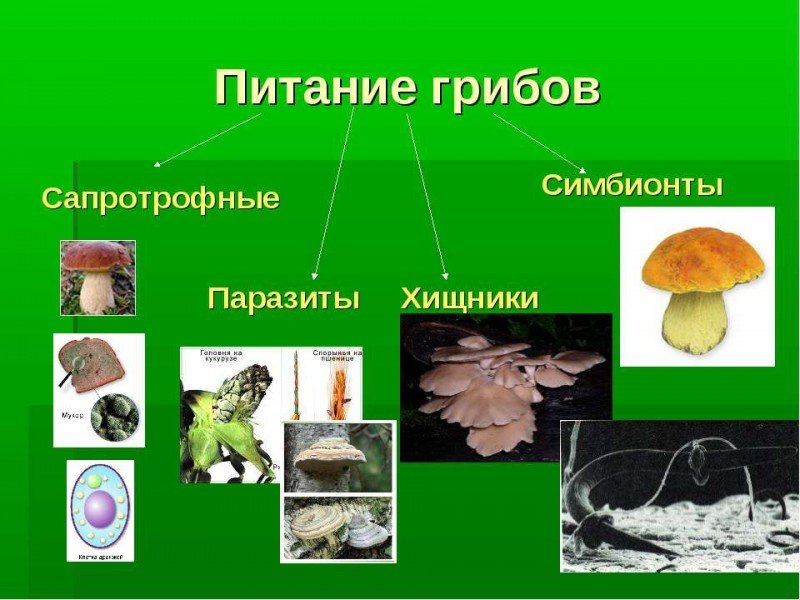
By the type of nutrition, mushrooms are divided into symbionts and saprotrophs. Symbionts parasitize living organisms. And saprotrophs include most of the mold and cap fungi, yeast. Saprotrophic fungi form a constantly lengthening mycelium every day. Due to its rapid growth and structural features, the mycelium is closely associated with the substrate, which is partially digested by secreted enzymes outside the body of the fungus, and then absorbed into the cells of the fungus as food.
Based on the fact that mushrooms are devoid of chlorophyll, they are completely dependent on the availability of a source of organic food, which is already completely ready for consumption.
The bulk of mushrooms for their nutrition uses organic matter of dead organisms, as well as plant debris, rotting roots, decaying forest litter, etc. The work done by fungi to decompose organic matter is of great benefit to forestry as it increases the rate at which dry leaves, twigs and dead trees are destroyed that would litter the forest.
Fungi develop wherever there is plant debris, such as fallen leaves, old wood, animal remains, and provoke their decomposition and mineralization, as well as the formation of humus. So, fungi are decomposers (destroyers), like bacteria and other microorganisms.
Fungi differ greatly in their ability to absorb various organic compounds. Some can consume only simple carbohydrates, alcohols, organic acids (sugar mushrooms), others are able to secrete hydrolytic enzymes that decompose starch, proteins, cellulose, chitin and grow on substrates containing these substances.

